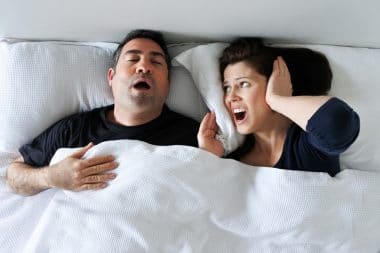We got a chance to talk with Zimin Hang – Lead Marketing & Operations for Ario Lighting
Zim is a neuroscience entrepreneur with a passion for sleep and the unconscious. He takes an empirical approach to helping companies reach their customers and optimize operational processes. Zim graduated from Washington University in St. Louis and founded two companies building a Smartpillow and a cryptocurrency mining farm. He’s won grants and patents for his work in clinical sleep technology.
How does smart lighting provide better health?
Quite a bit of research there. The best place to start is how humans evolved with the outdoor lighting environment. For 99% of our history we had this cycle with day time and night time where we had seven magnitudes difference in terms of intensity of light that our eyes are able to perceive. We had bright daylight compared to a candle light flame that’s actually a difference of close to 100,000 lux difference on that scale. Really quite incredible. More recently through the advent of artificial lighting we suddenly changed from this natural day / night cycle to the more or less fairly static artificial lighting. The problem we have with artificial lighting today is that, one it is completely static, and two it doesn’t change in intensity, color or direction. So when we compare that to how are bodies have evolved you can probably guess there are some consequences of us not getting this natural lighting.
Ario is based on over 15 years of research from Harvard Medical School, NASA, and NIH as well about how when we don’t receive proper lighting in color and direction to actually we get a disrupted circadian rhythm and that has really adverse effects on pretty much everything you can think of like, poor sleep quality, less energy during the day, as well as fat gain and weight regulation.
So the main thing is our circadian rhythm is controlled by the master clock know as suprachiasmatic nucleus and that is primarily regulated by the light input into our eyes. During the day we get this bright white and bright blue light from the upward angle that tells are bodies to start producing a lot of cortisol, a stress hormone and an energy hormone which gets our metabolism going. It is really crucial that we get this spike of cortisol at the beginning of the day but also throughout the day so that we can maintain this healthy level of energy.
On the opposite end, when it is closer to nighttime the type of lighting we need is downward projecting, more reddish, and lower in intensity. So when you think about how a bonfire might look, where the top half of our visual field is dark but the bottom half is this reddish color. And that signals to our eyes that it’s virtually dark. We need about two to four hours of this simulated darkness or complete darkness, either is fine, to start producing melatonin. Melatonin makes a huge difference on our sleep quality, which is what it is mainly known for. But there are a number of other uses for melatonin relaxation, parasympathetic activity, even intimacy, love and these other things we do when we spend time with a significant other. So, the regulation of these hormones are hugely influenced by lighting.
You mentioned weight gain, how does lighting affect your weight?
Lighting is a good 50% of everyone’s living environment. Lighting is important to everyone, it makes such a huge difference in how a room looks and feels.
Understanding how light impacts, sleep and weight gain or weight loss just in terms of awareness can be very useful.
One of the core features of Ario is that we are able to improve sleep with our lighting system.
One of the important differences with Ario is its ability to simulate this darkness, you have a bi-directional light which no one else has, one bulb facing upward, one facing downward. At night only the downward bulb is lite. This bulb is a warm amber color that simulates darkness and so if you are going to bed and use Ario what it will feel like is this sleepiness that feels natural so there is no need to take any medication, or supplement with a bedtime tea. So the primary purpose of sleep is to slow your metabolism down conserve energy among other things. When you don’t get the right lighting, use your phone before bed, use overhead white lights that will signal to your body to keep producing energy and when you have that much cortisol still being used and your body it is not able to wind down properly. You then wake up hungrier, you are more tempted to eat more food and that is actually compounded that if you don’t get good sleep quality your body craves more sugars and fatty foods. There is a ton of literature that shows that if you don’t get the proper amount of sleep or if you are chronically sleep deprived your drawn to sugar and carbohydrates, which has a direct link to weight gain.
That is the primary thing. I think during the day just having a general healthy circadian rhythm will help you regulate your metabolism and how hungry you get in a day. There is a pretty direct link between our body clock and when we get hungry. When you are jet lagged and you get hungry at all these weird times. There are actually some pretty good tips about how you can alleviate some of the effects of jet lag by eating your meals at the times of your destination. So if we are flying half way across the country if we start eating our meals at when you would expect to eat meals then you can actually alleviate this jet lag. There is this relationship between our circadian rhythm, our diet, our sleep quality and all of this is impacted by light.
Which room is the best room to put the Ario light in? Â
The bedroom, definitely.
We recommend the bedroom to have one or two Ario lamps. In addition to, being able to help our users wind down and sleep the other large value feature is that Ario has this artificial sunrise feature that is awesome if you don’t get morning sunlight, there are no windows in your bedroom, or not an east facing window. When we wake up we feel groggy, that is because we are not getting signaling from natural light ideally to tell our body to start producing cortisol in the morning. What we are wired for is 30 minutes to an hour of gradually increasing light before our body fully wakes up. Today what we have is mostly darkness, maybe if you have a window in the room you may get a little glancing light, but what we really need is direct light that signals to our body it is time to wake up. With Ario you get that morning light feature. And that is why we recommend the bedroom is the first place to install our light because you get the better sleep with better wake ups in the morning.
How does the Ario light know when I need to get up?
We really wanted to create Ario as a standalone solution. Our lamp has physical buttons that you can completely control. You don’t need to hook it to wifi. As soon as you turn it on it will geo locate and start changing the color intensity and direction of the bulbs according to where you live. So, all that is built in. And, yes, there is a built in clock.  But on top of that we also provide the connected app solution that you can use like your other smart bulbs. So if you want you can download the Ario app connect to wifi and set custom schedules bed time reminders. A machine learning function that will track how users are using their specific lamp and personalize your schedule based on how you like to use it. So like the Nest that saves energy by learning how you turn your thermostat up and down. In the same way Ario will learn about how its users use the lamp. For instance preferences for when you like to wake up on the weekends versus the weekdays and specific times on when you like to go to bed, it will remember all of those.
How does the Ario light deal with the differing length of days by seasons?
Another great feature is we embedded sensors and custom schedules so basically, what those combined do is work with ambient light sensors. So, let’s say,
you’re in a cloudy city like Seattle or you are not getting much daylight at all we can actually increase the brightness or change how bright Ario light is to compensate for a lack of natural light. Same thing if you are in a room without windows, Ario will automatically be brighter. Where if you are in a room with natural light Ario will sense that and be dimmer during that sunny time of day. That is really important for balancing out the light during the day. But if you are living in a city like Seattle, where most days are cloudy Ario will provide supplemental light. In fact, our founders, are from Seattle originally. A lot of the inspiration for Ario is Seasonal Affect Disorder (SAD) in the beginning. Just to be clear we are not a medical device but we have hopes to supplement some of the SAD lights out there.
One of the core features of Ario is that we are able to improve sleep with our lighting system. #HealthStatus
Ario is based on over 15 years of research from Harvard Medical School, NASA, and NIH as well about how when we don’t receive proper lighting in color and direction to actually we get a disrupted circadian rhythm and that has really adverse effects on pretty much everything you can think of like, poor sleep quality, less energy during the day, as well as fat gain and weight regulation.








Reply